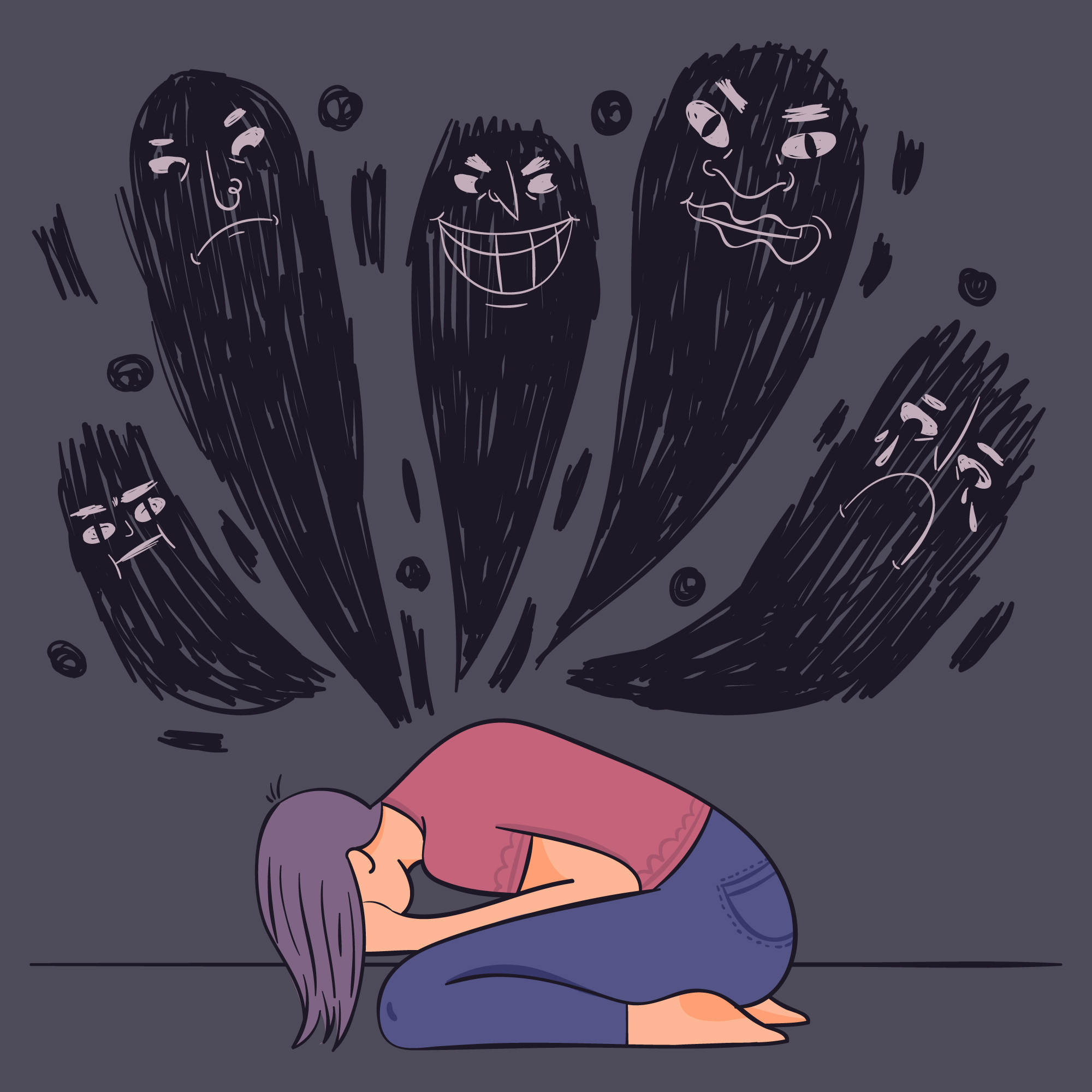Public education systems punish families of multiples by forcing impossible choices between their children—often withholding support until one child reaches visible crisis, while the other’s suffering is quietly disregarded.
The statistical reality schools refuse to prepare for
Schools are rarely prepared for what families of multiples often bring to the classroom:
- complex and overlapping needs,
- early signs of neurodivergence,
- and parents who have already begun building the scaffolding of support.
These families often arrive not only with documentation and diagnoses, but with lived expertise and strong instincts, from being in the trenches of caring for two or more infants simultaneously.
Yet instead of being met with readiness or respect, they are met with rigidity. Schools insist on starting from zero, as if each child’s struggle were a fresh surprise. But for multiples—especially when one twin has already received a diagnosis—the statistical likelihood that the other also requires support is high. This is a predictable pattern, and the refusal to plan for it is a systemic failure.
The medical and developmental risks of prematurity
Premature birth is associated with higher risk for developmental delays, sensory processing differences, and emotional regulation challenges—many of which require educational accommodations.
The role of advanced maternal age in diagnosis and disparity
Older parental age—more common in families of multiples—is associated with both increased likelihood of certain neurodevelopmental conditions and greater parental education and wealth.
These parents often bring years of professional experience, systems literacy, and emotional insight to the table. While older mothers are frequently the primary advocates, older fathers also play critical roles and may themselves share neurodivergent traits.
The intersection of age, insight, and intensity often clashes with school expectations that parents arrive uncertain, passive, and willing to defer.
Genetic heritability and shared traits in twins
Genetic factors further compound these risks: when one twin displays neurodivergent traits such as autism or ADHD, the other sibling is significantly more likely to share them due to high heritability rates. Even in fraternal twins, the simultaneous presence of shared risk factors—biological and environmental—makes overlapping support needs more predictable, not less.
Disabled parenting in a neurotypical-facing system
When one or more children are neurodivergent, there is a high likelihood that one or both parents are also neurodivergent—especially in cases of autism or ADHD, which show high heritability. Many parents of neurodivergent children exhibit undiagnosed or subclinical features themselves, particularly mothers, who are frequently overlooked until their child’s needs bring patterns into focus.
Disabled parenting in a system that presumes all parents are neurotypical creates additional barriers. Parents may process information differently, struggle with traditional communication formats, or be perceived as overly rigid or emotional when in fact they are navigating stress through neurodivergent lenses.
A system that meets expertise with resistance
These families often arrive with well-documented needs and clear expertise. Instead of meeting that readiness with support, schools respond with suspicion, delay, and rationing.
Support is frequently postponed until a child becomes visibly dysregulated or disruptive. Preventative strategies are dismissed. Shared patterns across siblings are ignored. When two children in the same classroom both require accommodations, schools treat them as separate crises to be triaged rather than interrelated needs to be planned for—often prioritising the more disruptive or visibly dysregulated child, while disavowing the equally urgent needs of the more compliant, often female-coded child who masks, minimises, or internalises her distress.
Triage is not a plan
Often administrators insist that one educational assistant is enough, even when two children with complex needs are placed in the same class. Twin families, especially used to the eviscerating work of being pulled in two directions by complex needs, especially attuned to the risk this poses.
They redirect attention toward one child’s behaviours while ignoring the bruises, fear, or trauma responses of the other.
When parents refuse to play favourites—when we demand safety and dignity for both of our children—we are dismissed as unrealistic.
The trap of false equivalency
I was told that a single support worker could meet the needs of both of my autistic, ADHD, traumatised twins. One child became the focus of staff concern while the other was left unsupported, isolated, and wounded. The system forced me to either watch one child collapse and it tore my heart in half. I would keep them home on alternating days, to try to ensure they weren’t traumatised. That is not a support plan.
When policy harms by design, it becomes discrimination
Policies like “one EA per class” appear fair and neutral. But when those rules systematically disadvantage families of multiples, they function as discrimination. They disproportionately harm disabled children and their families.
The institutional fear of maternal fluency
Twin mothers tend to be older, more educated, and professionally established. We often arrive knowing how systems work. We use language that reflects expertise: data collection, de-escalation strategies, trauma-informed care. We are not guessing—we are naming what is needed. Many of us have already gone through years of therapy and worked with occupational therapists and have had five years direct experience in supporting our children. We know them better than the school system and what could help them cope and thrive.
But schools, especially under-resourced ones, often respond to that fluency with defensiveness. They expect parents to be deferential. When we are confident, prepared, and morally firm, we are treated as threats. Our insight is dismissed as interference. Our refusal to accept harm is labelled “agrressive.” And the system begins to turn against us.
It is no wonder I was perceived as uppity. I spoke in clear terms, brought evidence, and jumped every impossible hoop they erected. I acquired a fluency in the jargony language they speak, read the laws, explored the escalation paths. I asked strategic questions, and I followed up. I said, more than once, that something was unacceptable. I made it harder for them to keep saying no. And that clarity—that refusal to perform passivity—is what many systems punish most of all.
After 20 years in consulting, accustomed to directing decisions and designing process, my affect was perceived as threatening and condescending. No matter how careful I was to try to protect egos and how delicately I tried to facilitate interactions, no matter how small I tried to make myself and service to my children, I was always perceived with disgust for insisting my children needed appropriate support.
-
Disgusted by my advocacy
I have become hyper-attuned to the particular curl of a staff member’s lip, the slight recoil in their chair, the clenched tone when I insist—again—that my child…
Gifted neurodivergent twins
In my experience, The traits that schools find threatening in neurodivergent mothers—fluency, precision, moral clarity, emotional intensity—are the same traits they punish in our children. When our children mask, they are praised. When they cannot sustain it, they are shamed. If they succeed for a while, that success is used to deny support. If they fail after succeeding, that failure is framed as a personal choice. The system treats regulation as a performance, not a capacity—and every child is expected to sustain it indefinitely, regardless of cost.
There is no allowance for cycles, exhaustion, collapse, or delayed fallout. There is no recognition that masking is an adaptive survival strategy, not a sign of wellness. And when we speak that truth—when we say, “My child is breaking down because they have held it together for too long”—we are met with blank stares or subtle scorn.
There is, underneath the policy language and professional tone, a disgust reserved for neurodivergent mothers. Our intensity is treated as excess. Our insight is cast as manipulation. Our refusal to smile, soften, or flatter is interpreted as threat. And like our children, we are punished not for doing something wrong, but for refusing to perform what the system finds palatable.
Gifted neurodivergent children are punished for contradiction: for being too capable to be believed, and too distressed to be helped. Neurodivergent mothers are punished the same way. We are seen as too articulate to be suffering, and too emotional to be trusted. We do not fit the role of the grateful, uncertain parent. We arrive already knowing. And for that, we are resented.
The burden of being seen twice within a manufactured scarcity economy
When you are the parent of one disabled child, the school expects your presence. You are invited to one IEP meeting, asked to speak to one team, framed as a partner in one narrative.
But when you are the parent of two disabled children—especially twins—your visibility doubles. You are in twice as many meetings. You send twice as many follow-ups. You raise questions not once, but again, from another angle, on behalf of another child. And the system begins to recoil.
Because care is rationed. Attention is rationed. Goodwill is rationed. And most schools operate with an unspoken threshold: each family is allowed a certain quantum of concern, and once that limit is reached, they are recast as demanding.
When we show up as the parent of two, we are perceived as asking for too much—even when each child’s need is urgent and distinct. It does not matter that both are entitled to support. It does not matter that both are harmed by inaction. The moment our presence exceeds what the system is prepared to tolerate, we are labelled difficult. And if we are disliked when they see us once, we are resented when they must see us twice.
-
The scarcity script: how manufactured famine shapes public education
British Columbia’s public schools are not suffering from a natural shortage—they are operating under a system of manufactured scarcity. This blog explores how austerity, rationing logic, and…
Refusing to choose is a form of resistance
Every time I said, “both my children need support,” I was met with silence or blame. Every time I named trauma, I was told to wait for proof. Every time I had proof, the goal post was shifted.
But what they asked of me—to choose which child mattered more—is not only unethical, it is illegal.
Holding all our children in view
Families of multiples face erasure when schools insist on serving only the loudest crisis. When we resist that erasure—when we escalate, advocate, and document—we are framed as disruptive. But we are doing what the system refuses to do: holding all our children in view.
Inclusion requires structural humility
Inclusion is not a buzzword. It requires flexible staffing, early intervention, and planning for families who arrive already knowing what their children need. It requires letting go of the assumption that school professionals always know better. It requires believing parents who have done this before.
It is time to stop punishing families for the number of children they have. It is time to stop treating maternal fluency as a threat. It is time to build systems that listen when parents speak clearly. Because we are already here. And we are not going away.
-
Apparently, starving yourself isn’t a serious mental health condition in VSB
There is a kind of harm that unfolds slowly — a hunger that accumulates across weeks and months, tucked beneath the surface of routines and well-meaning systems.…
-
When autistic girls fawn and schools look away
They told her to be polite while she was being harmed. Now they call her difficult for saying no. Jeannie never screamed—never yelled or stormed out or…
-
She’s agonised inside and that doesn’t count?
Much of this unfolded in 2022 and 2023, during a period when my daughter remained undiagnosed as autistic, unsupported in any formal way, and largely invisible to…












